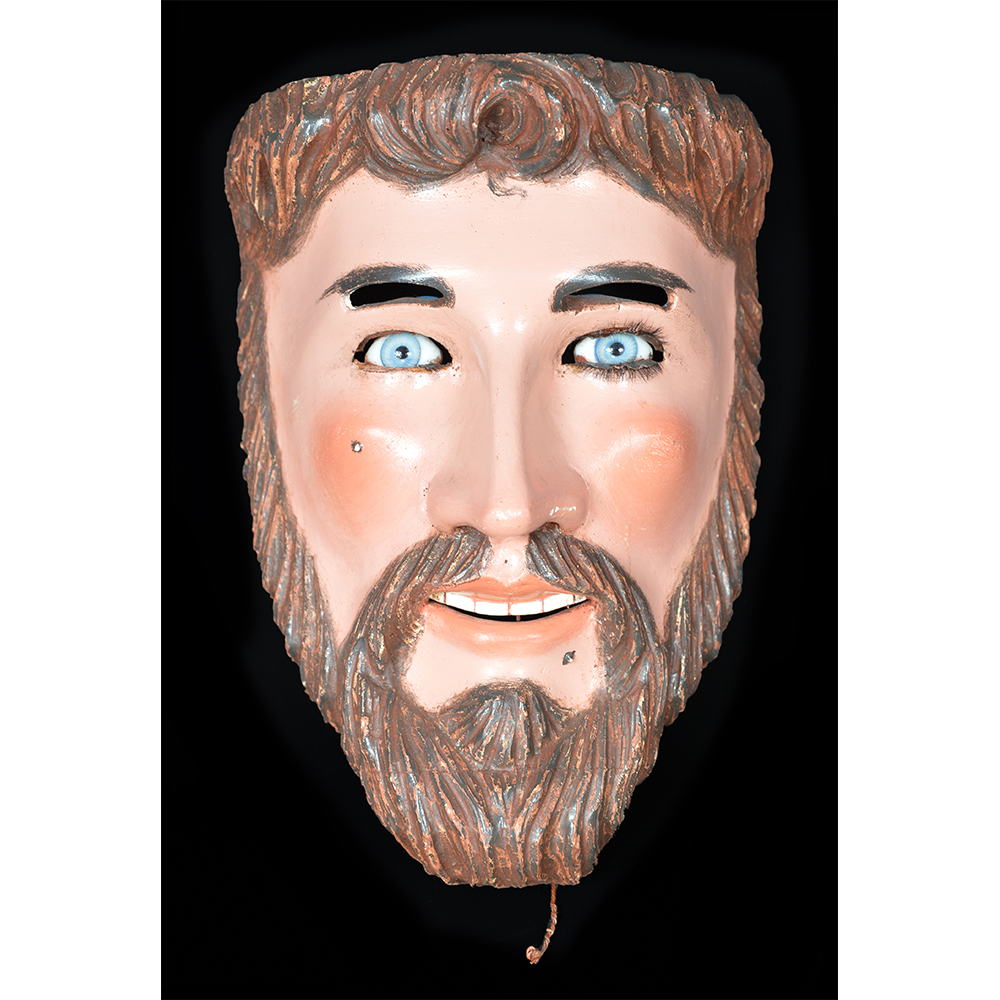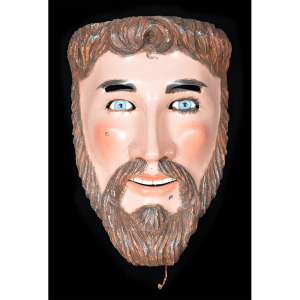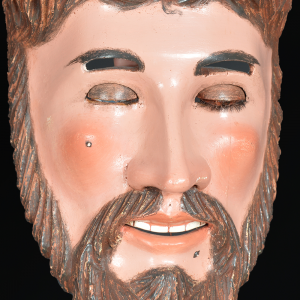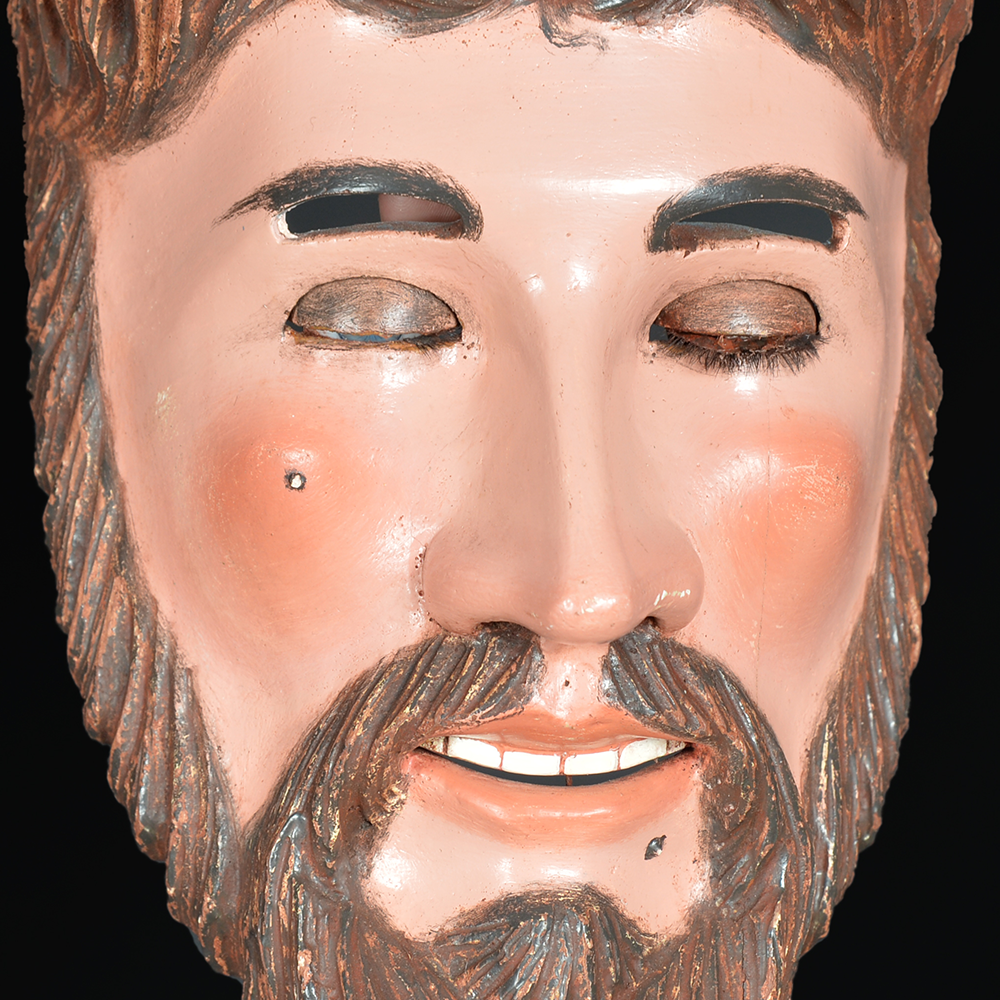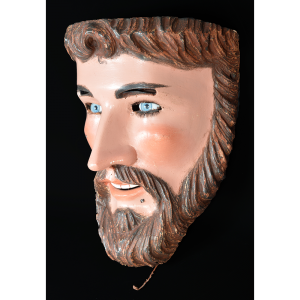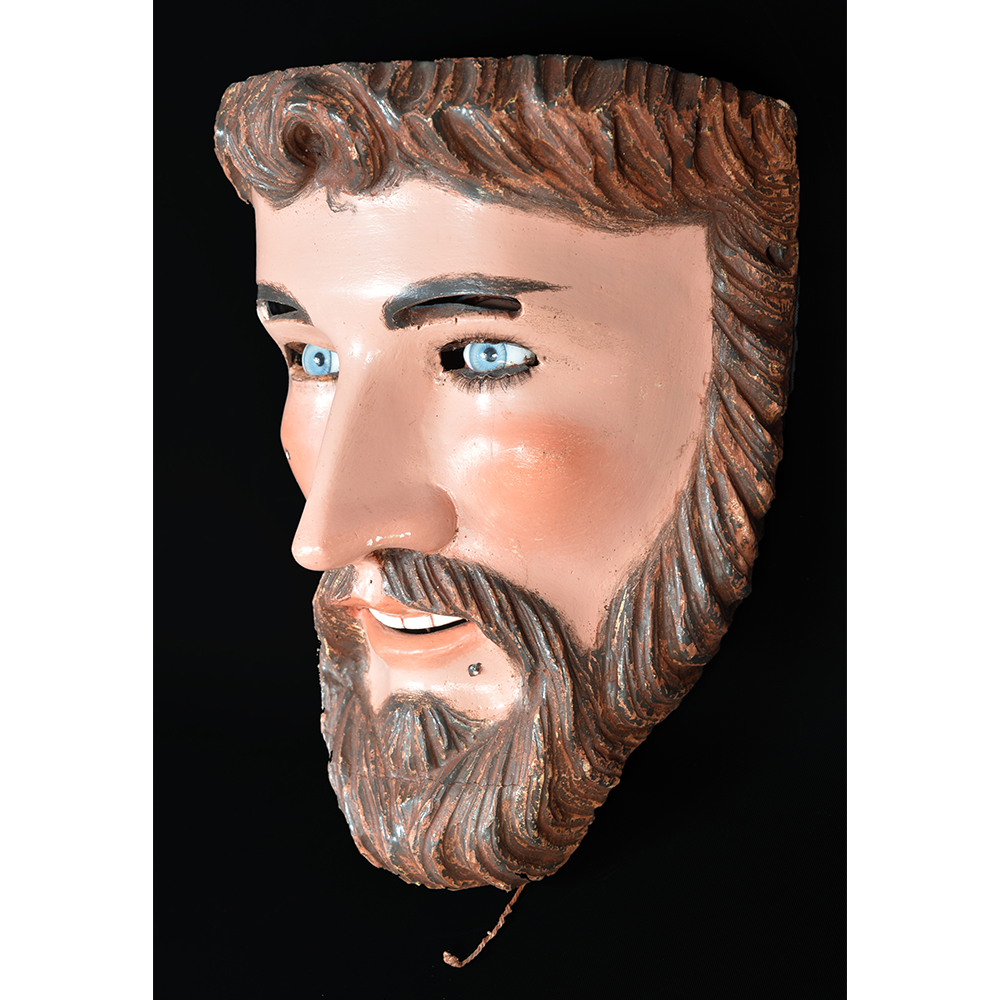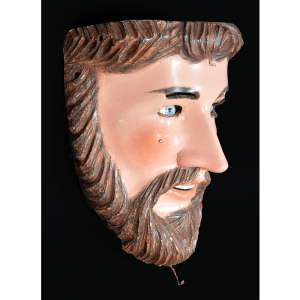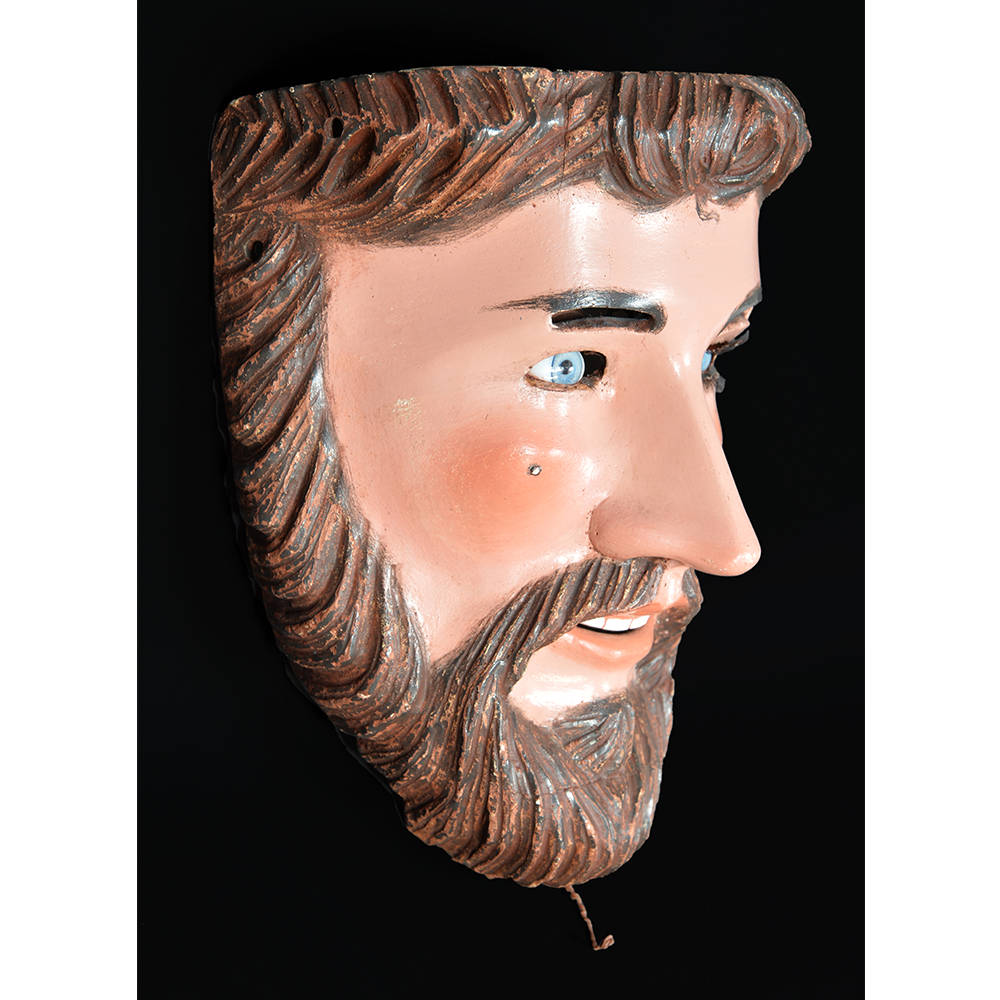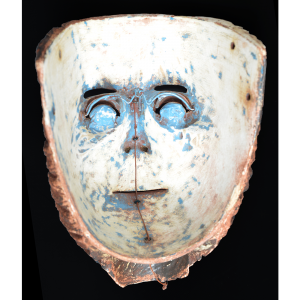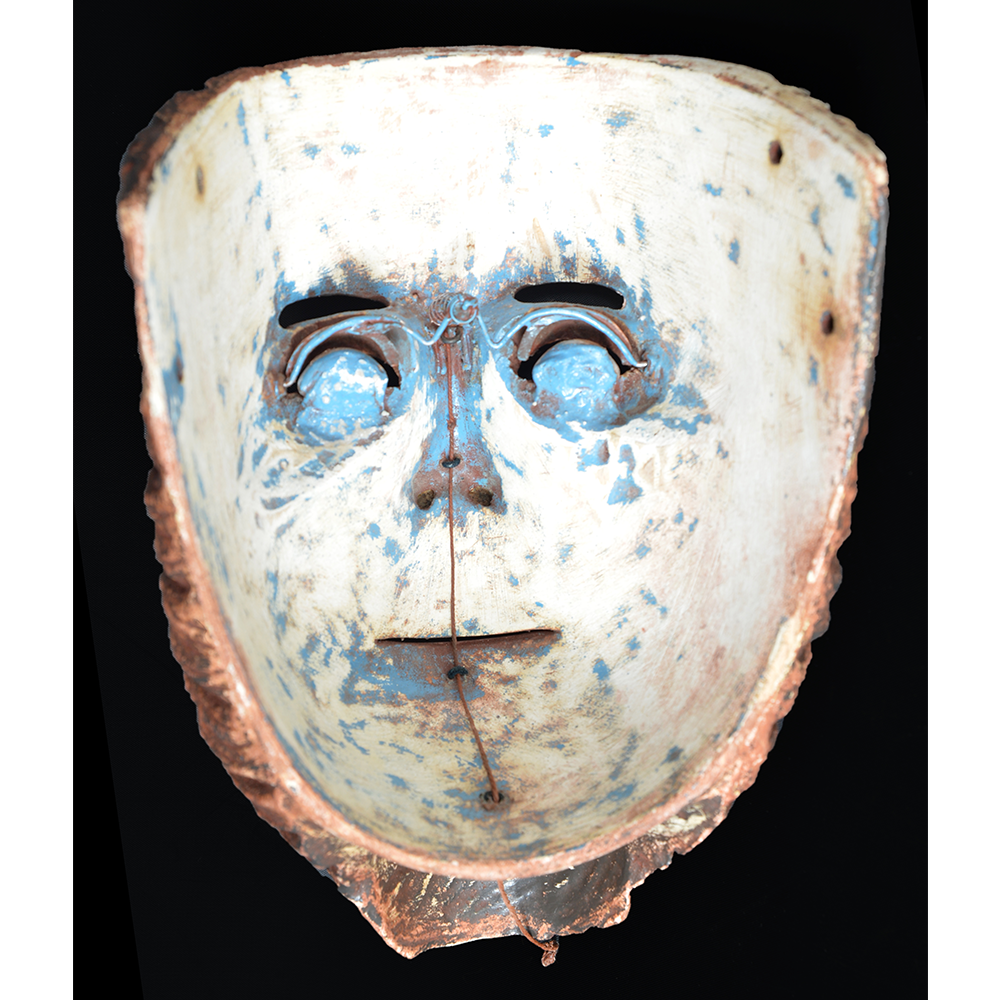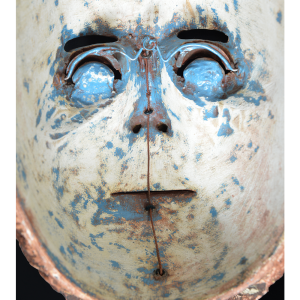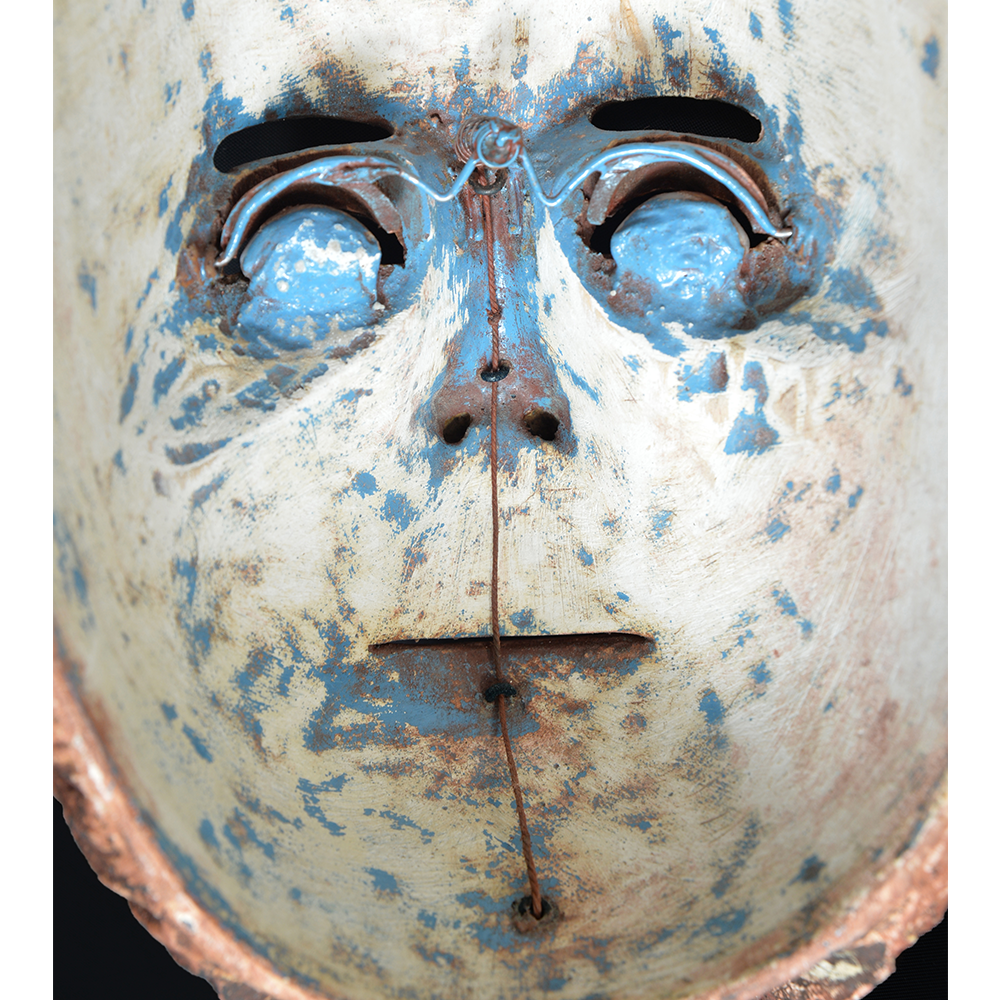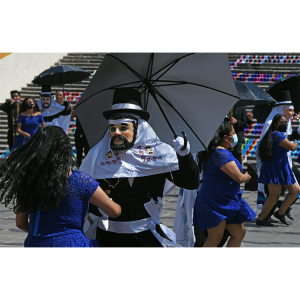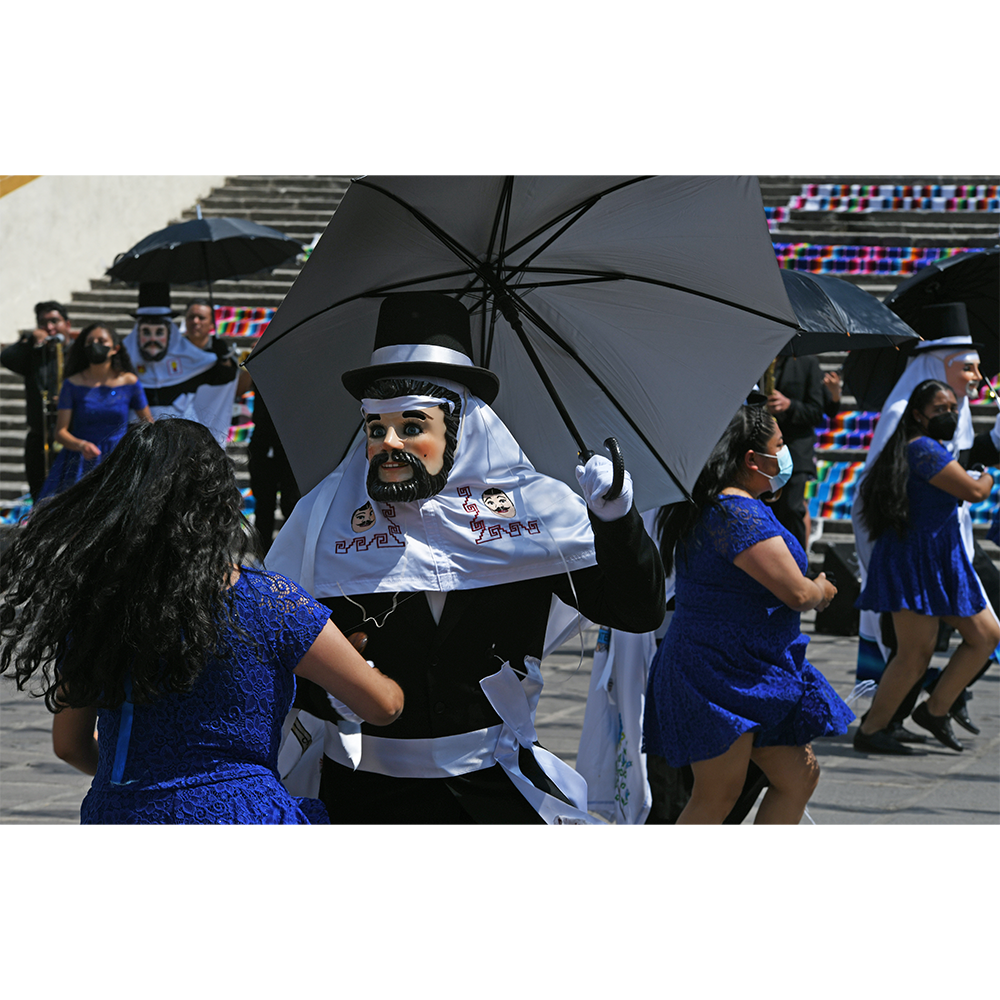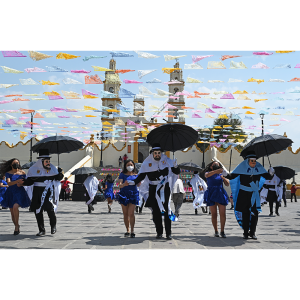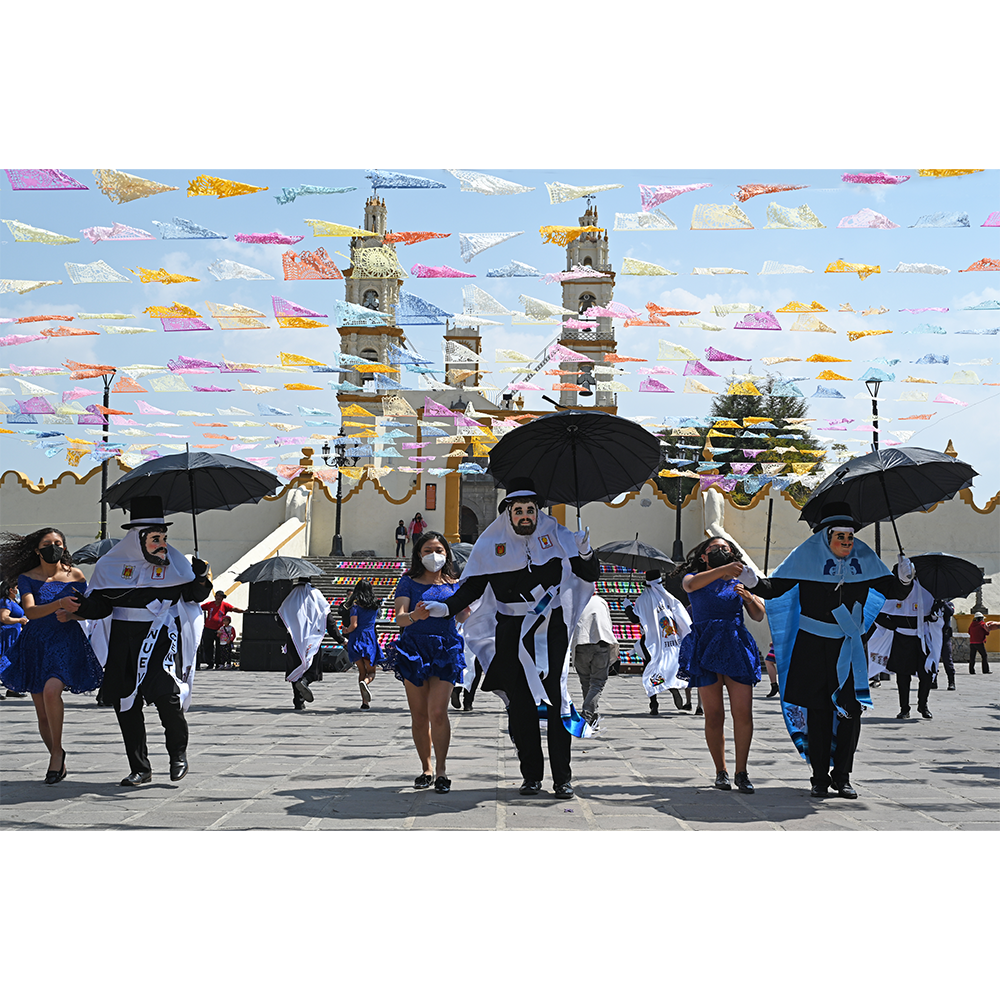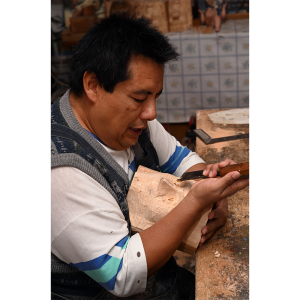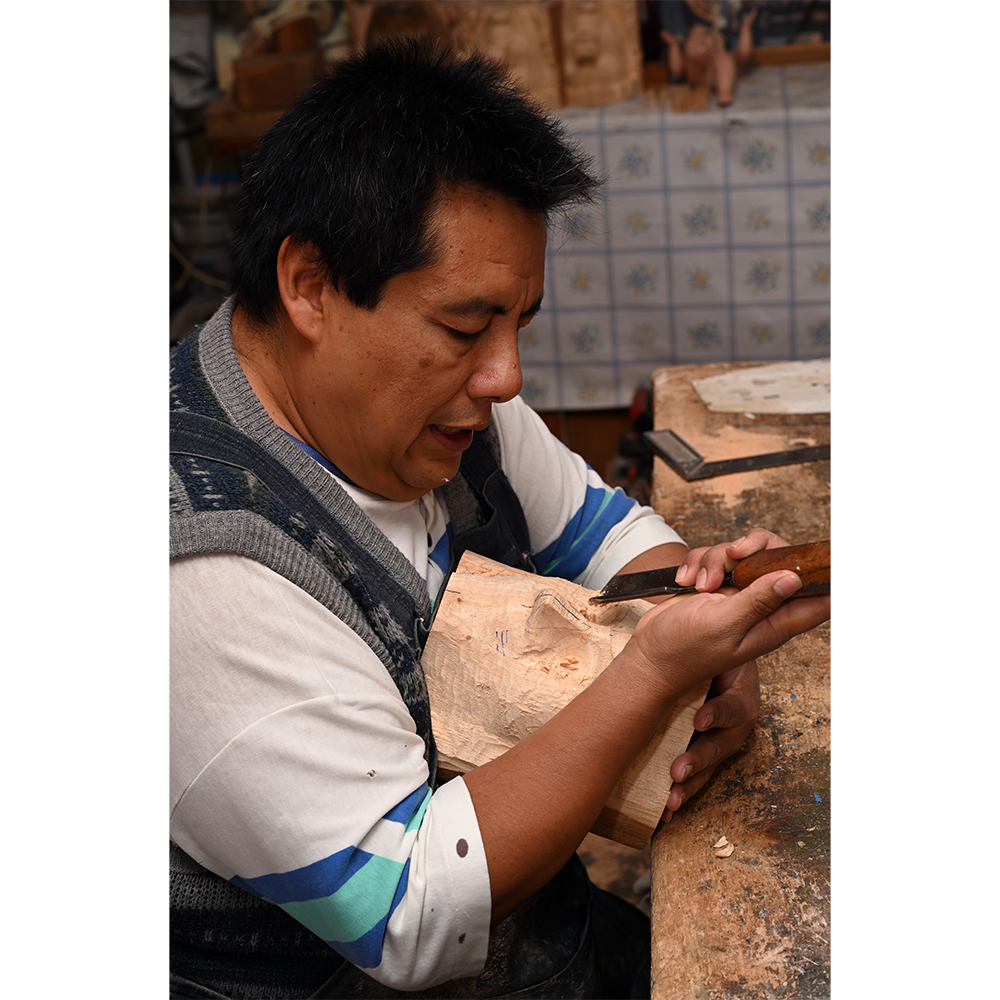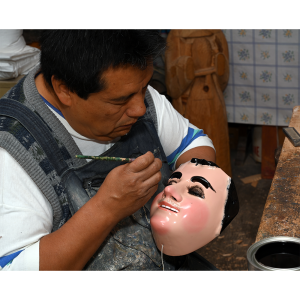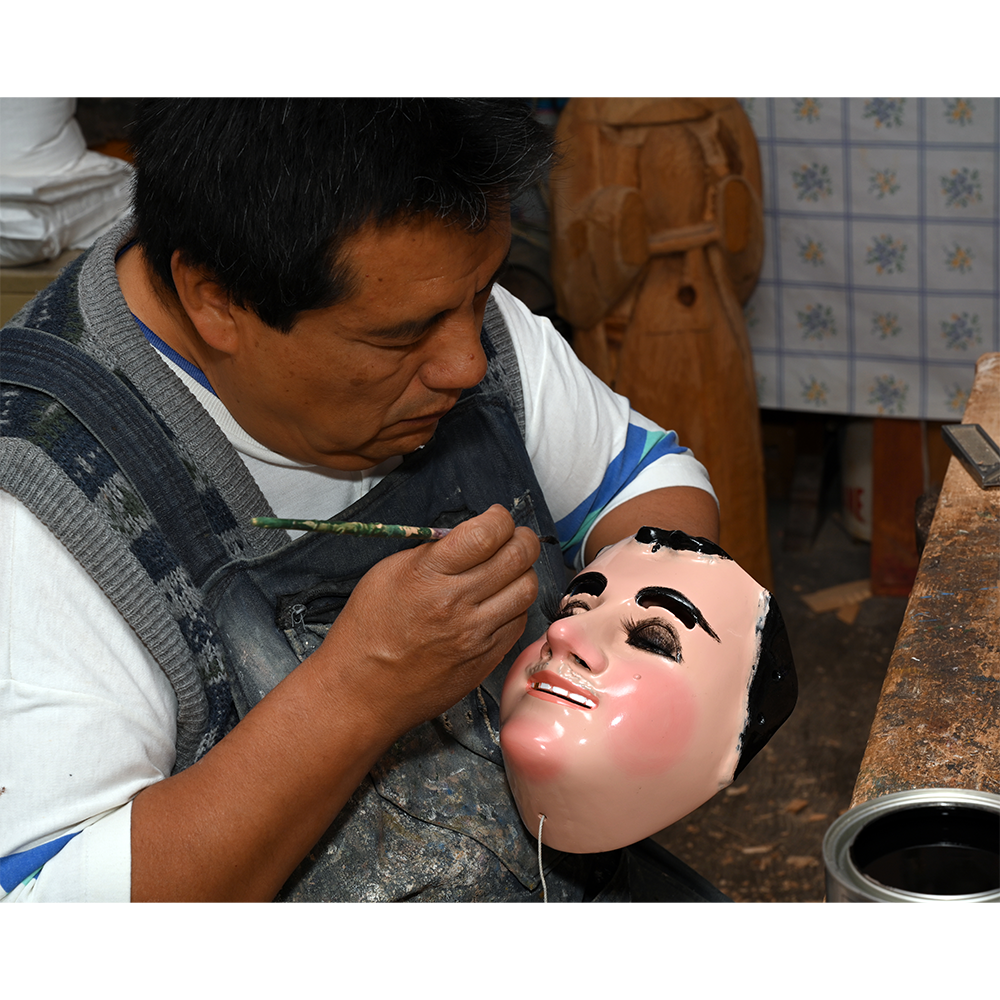TITLE: Catrín (Huehue) Mask
TYPE: face mask
GENERAL REGION: Latin America
COUNTRY: Mexico
SUBREGION: Tlaxcala
ETHNICITY: Nahua
DESCRIPTION: Catrín (Dandy) or Huehue (Elder) Mask
CATALOG ID: LAMX143
MAKER: Unknown
CEREMONY: Carnival
AGE: 1960s-1970s
MAIN MATERIAL: wood
OTHER MATERIALS: oil-based paint; glass eyes; cattle hair eyelashes; metal hardware; cotton string
Carnival in Tlaxcala, Mexico has traditions quite different from those in other parts of the country. The men dress in formal suits, gloves, and top hats, with extremely realistic and handsome Caucasian-type masks, and in some towns carry umbrellas through the streets as parasols. The catrín, or dandy, is a figure of ridicule dating back to colonization, when elaborately dressed Spaniards flaunted their wealth to the oppressed indigenous peoples. When wearing a beard, they are sometimes called huehues, meaning “village elders.” The catrín is the indigenous revenge, possible because the masks and costumes made it difficult to identify the culprits. Frequently the masks have gold teeth and beauty marks, like this one, and include an ingenious spring mechanism attached to a string, which allows the masquerader to blink the dandy’s eyes by pulling on the string. Glass eyes were imported into Tlaxcala for mask-making around 1960. They may dance with men dressed as girls, real girls, or together in a parade format.
This catrín may also have served as a huehue del torito, one of several bullfighters who wear the outfit of a cowboy (charro) and mock battle a leather or paper maché bull fitted with fireworks and carried on the “bull’s” shoulders. Recently, the tradition of wearing such masks has given way to the wearing of mass-produced lucha libre (Mexican wrestler) masks in San Miguel Tenancingo and elsewhere.
Hand-made masks of this age were delicately carved and hand-painted by master craftsmen in multiple layers. Today’s masks are airbrushed and rarely include mechanical eyelids.
A brief documentary about Carnival in the state of Tlaxcala, Mexico.
